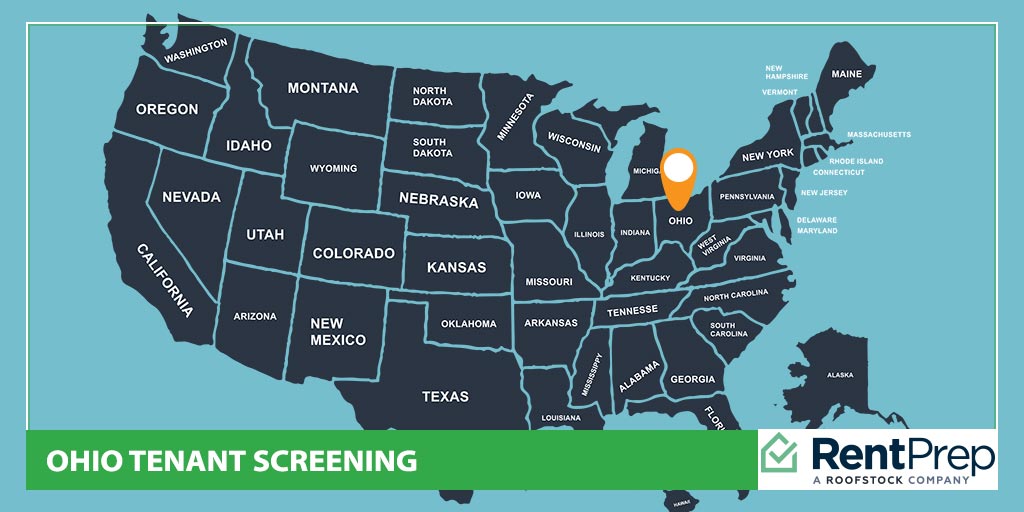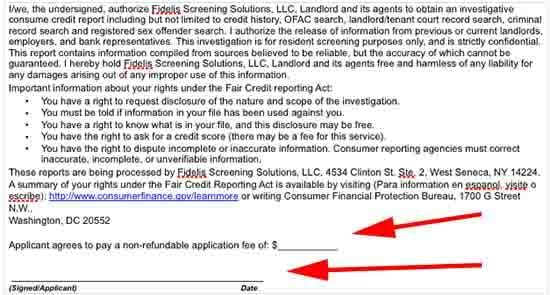
Ohio tenant screening is unique because in the Buckeye State, things are done differently in some areas of landlord-tenant law.
You can learn a lot from our helpful post on Ohio tenant screening and it includes the following topics so that landlords throughout the state can find the number one tenants for each and every rental property.
Here’s what we cover:
- All about Ohio tenant screening laws
- Numerous free resources for landlords like you
- A comprehensive overview of the screening process
- Helping you to select a tenant screening service
Ohio Tenant Screening Laws
Most states have similar screening laws, but every once in a while, a state will be different enough to confuse things. If you are a landlord in Ohio, there are several laws that you need to be aware of.
- There is no limit to how much Ohio landlords can charge applicants as a security deposit
- Landlords in Ohio are not limited to how much security deposit they can collect
Any security deposit in excess of fifty dollars or one month’s periodic rent, shall bear interest on the excess at the rate of five per cent per annum if the tenant remains in possession of the premises for six months or more, and shall be computed and paid annually by the landlord to the tenant. Ohio Code 5231.16
In Ohio, an application fee is separate from a security deposit and is non-refundable, while a security deposit is all or partly refundable based on damages. Of course, if an Ohio landlord chooses to refund the application fee, that’s no problem.
Learn more about the laws in Ohio that have to do with tenant screening right here.
Read This Before Making a Screening Mistake
When someone fills out a rental property application, you must make sure that they are giving you the right to run a background check. You can only do this if you have a signed consent from the applicant.
Plenty of bad or incomplete rental application forms have no place for applicants to sign for consent. If your form is in need of this vital language, make changes to it before your next vacancy.
This is what our signed consent request language looks like on our RentPrep document:

You can see that the top arrow highlights language about the application fee being non-refundable. Most applicants will ask about this.
The bottom arrow indicates where the applicant must sign to give consent to run a background check.
Resources for Tenant Screening in Ohio:
Take a look at a few of these free forms, guides and resources that can aid you in finding the best possible tenant for your rental property.
- Move-In Move-Out checklist – This is helpful for after the tenant screening process to make sure you document the condition of the rental
- Rental Lease Agreement – Once you’ve decided on a tenant you’ll want to draw up a lease. This editable doc is a good starting place.
- Summary of Your Rights Under the FCRA – Our screeners here at RentPrep are FCRA certified to ensure compliance on your screening report
- Ohio Landlord Tenant Handbook – From Ohio Legal Services
- Ohio Legislature Landlord Statute and Codes – A good overview of the state’s laws concerning landlords and tenants
*Don’t forget to implement a “No Blank Space” policy for all rental applications. That’s when you don’t accept rental applications with any blank spaces. Doing this will help you screen out bad applicants right from the start because applicants with something to hide tend to leave blank spaces all over the rental application.
Ohio Tenant Screening Process
Good landlords create tenant screening criteria for each rental property. Putting it in written form is a good way to stay consistent between vacancies.
The screening criteria will probably include the following things:
- Can’t have any prior evictions
- Employed at the current job for at least 6 months
- Can’t have pets over 15 pounds
- No arrests or convictions for violent crimes
- Can’t show bankruptcy in the last 5 years
Of course, there are all kinds of factors to include in your criteria. However, don’t ever allow your screening list, marketing material or interview process to discriminate against any protected classes. To learn more, visit hud.gov.
Written screening criteria can help you protect yourself from a lawsuit such as from a denied applicant. You can show it to investigators and point out where the applicant failed to meet it.
That being said, always make sure you are consistent in screening tenants. Never make exceptions to your rules and never make changes to your criteria from one applicant to another. Making exceptions could be seen as discrimination and might introduce legal trouble.
Dealing with tenant screening in Ohio is a lot like other states, and there are several things to keep in mind:
- There’s no limit to the amount that landlords in Ohio can charge for an application fee
- Application fees are separate from security deposits and are non-refundable
- Landlords in Ohio have no limit on the amount of security deposit they can charge, but they must pay the tenant interest on any amount that equals more than one month’s rent
To learn more, try reading this guide about landlords and tenants in Ohio.
[activecampaign form=140]
Choose a Screening Service
Now that you have a select few tenant applicants, it’s time to run a background check.
Smart landlords know that a thorough background check must include the following:
- Eviction history
- Bankruptcy search
- Judgments and/or liens
- Prior address history
Never rent to a tenant based only on your instincts. While they may be good in many instances, this practice is just a problem waiting to happen. Use a qualified tenant screening service instead.
At RentPrep, we’ve worked with more than 21,000 landlords over the past 10 years.
Check out our tenant screening packages to see what we can do for you.
Our FCRA certified screeners will deliver to you the best tenant screening report available.

